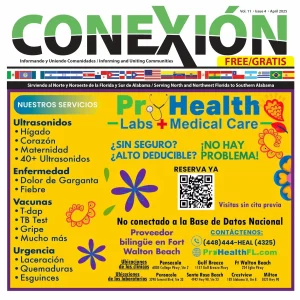by Refresh Leadership, Express Employment Professionals Refresh Leadership Newsletter
As we learned in the Leadership by the Numbers series about the Enneagram types, each person’s unique personality traits help determine the type of leader they are prone to be. Another strong tool to use to uncover leadership tendencies and understanding strengths and weaknesses associated with personality traits is the Myers-Briggs Type Indicator.
First published in 1962, the indicator examines different personality preferences within four specific relational realms:
- People and things (Extraversion) or ideas and information (Introversion)
- Facts and reality (Sensing) or possibilities and potential (Intuition)
- Logic and truth (Thinking) or values and relationships (Feeling)
- A lifestyle that is well-structured (Judgment) or one that goes with the flow (Perception)
Of these four preferences, the Myer-Briggs Type Indicator determines 16 different personality types through a combination of Extraversion or Introversion; Sensing or Intuition; Thinking or Feeling; and Judgment or Perception. The first letter of each preference becomes the Myers-Briggs personality type, with exception to Intuition (N).
To determine your personality type, visit the Myers-Briggs site to participate in the official evaluation.
During the first part of this series, we will examine the four personality types that align with Extroversion (E) and Intuition (N).
ENFJ – The Passionate Leader
Individuals with the ENFJ distinction are charismatic, understanding, and motivational leaders. Through encouragement and leading by example, they strive to make their world a better place. Because of their intuition and feeling traits, they are able to navigate social situations easily, allowing for ENFJs to be diplomatic.
According to Myers-Briggs, ENFJs “get the most out of teams by working closely with team members and making decisions that respect the impact they may have on others. As leaders, they’re usually great at building harmony, encouraging self-expression, and inspiring others. They tend to be organized and people-focused.” This is why they are referred to as the compassionate facilitator.
Some potential struggles ENFJs may have are conflict avoidance, withholding criticism, and focusing more on relationships instead of objectivism and logical action.
ENFP – The Inspirational Leader
Those with the ENFP tendency are creative, curious, and independent, while leading with vision and passion. Usually not micro-managers, ENFPs lead by giving their team members autonomy to work on the tasks at hand. They are inspirational and enjoy brainstorming with others. Their zeal for coming up with new ideas, while encouraging and uplifting others is why they are referred to as the imaginative motivator.
According to Myers-Briggs, ENFPs “are often willing to consider almost any possibility. In fact, they usually develop multiple solutions to a single problem. They’re energized by new people and experiences. They generally value depth and authenticity and are often described as lively but restless.”
One potential struggle ENFPs have is lacking the ability to prioritize their ideas and goals, giving each ambition equal footing. This can cause burnout for themselves and overwork for their teams.
ENTJ – The Assertive Leader
People with the ENTJ personality type are straight-forward leaders who manage with decisiveness, confidence, and strategic insight, which is why they are referred to as decisive strategists. They have a tendency to dream big, while still delivering on their goals and promises. Their quick decision-making skills help move projects along and their big-thinking vision helps inspire others to dream big and work toward the goals of the organization.
According to Myers-Briggs, ENTJs “usually take a broad, strategic view of the future. They like to organize people and resources efficiently to accomplish long-term goals—as a result, they tend to be comfortable leaders. Objective and critical in their decision-making, they can also be energetic and like to take an original approach to problems.”
Because of their determination, they tend to focus more on the task at hand instead of the needs of those around them. Their drive to finish projects quickly can sometimes lead to overlooking minute details.
ENTP – The Innovative Leader
Referred to as the enterprising explorer, the ENTPs lead through innovation and enthusiasm. They are resourceful problem-solvers who lead through action, strategy, and assertiveness. ENTPs tend to be extremely competent entrepreneurs who challenge themselves to continually excel and expand in their business endeavors. When making decisions, ENTPs first analyze the possibilities and opportunities that align with a decision, and then take the most logical approach to the problem.
According to Myers-Briggs, “people with ENTP preferences tend to have an innovative way of thinking. They see connections that others miss and quickly recognize patterns within a system. They enjoy developing strategies, solving complex challenges, and noticing new opportunities. Other people often think of them as clever and resourceful.”
Some ENTPs struggle with moving to the next best thing, while leaving projects unfinished. Because of their innovative thinking, they may struggle with procrastination and a lack of prioritization with the task at hand. Their approach to brainstorming may also lead to a combative approach, tearing down others’ ideas.


